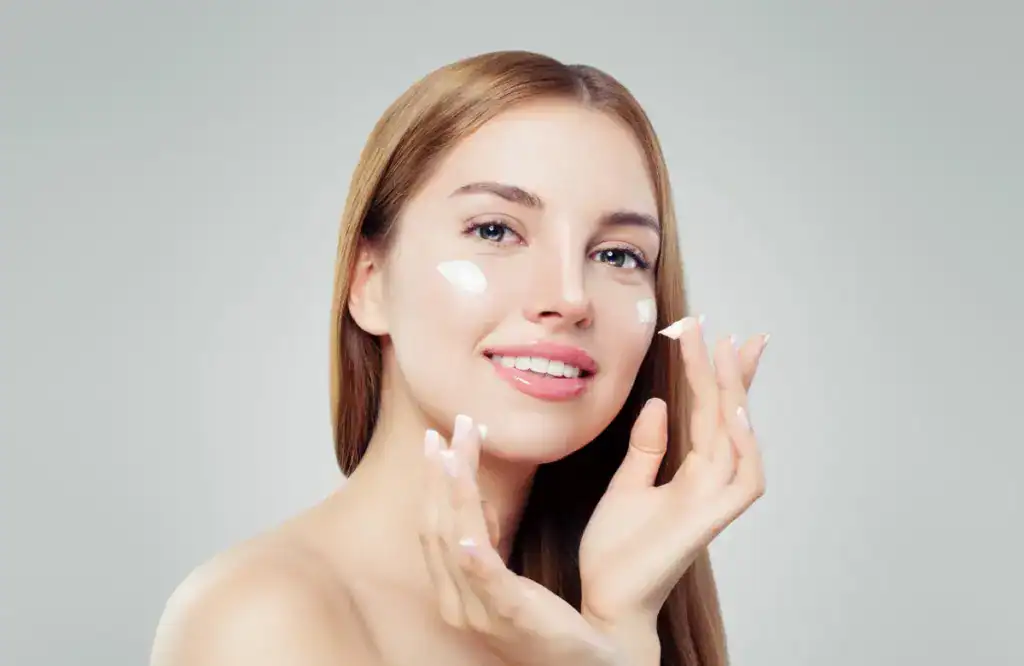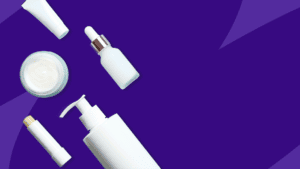Before diving into specific products, it’s essential to understand your skin type and the issues you want to address. Skin can be generally categorized into several types: normal, dry, oily, combination, and sensitive. Each type has different needs, and knowing yours will guide you in choosing the most suitable cream.
Accurately identifying your skin type is the first step towards effective skincare. Observe your skin’s behavior throughout the day. Does it feel tight, shiny, or balanced? Understanding these signals can help you categorize your skin type more precisely. For instance, if your skin feels tight and flaky, it’s likely dry, whereas a shiny appearance often indicates oily skin.
Beyond determining skin type, identifying specific skin concerns is crucial. Are you battling acne, uneven skin tone, or premature aging? By pinpointing these issues, you can target them with the right ingredients. Documenting your skin’s responses to environmental changes can also offer insights into persistent problems.
Sensitive skin requires extra attention and care. It’s prone to redness, irritation, and allergic reactions. If you notice frequent adverse reactions to skincare products, it’s essential to seek formulations that are hypoallergenic and free from harsh chemicals. Patch testing new products can prevent unwanted reactions.
Understanding the unique characteristics of each skin type enables you to address its specific needs effectively.
Normal skin is generally well-balanced, neither too oily nor too dry. It benefits from a simple skincare regimen focused on maintenance. Incorporating antioxidants and SPF can protect it from environmental damage. Regular cleansing and moisturizing help maintain its natural glow and resilience.
Dry skin often feels tight and can look dull or flaky. It requires creams rich in emollients and humectants to restore moisture. Ingredients like hyaluronic acid and glycerin can lock in hydration, while ceramides help strengthen the skin barrier. Avoiding hot showers and harsh soaps can prevent further moisture loss.
Oily skin is characterized by an overproduction of sebum, leading to a shiny appearance and enlarged pores. Opt for lightweight, non-comedogenic creams to prevent clogged pores. Ingredients like salicylic acid and niacinamide can help regulate oil production and minimize breakouts. Regular exfoliation can also keep pores clear.
Combination skin features oily and dry areas, often with an oily T-zone and drier cheeks. It requires a tailored approach to balance different needs. Gel-based moisturizers can hydrate without adding excess oil. Target treatments like clay masks can absorb excess oil in the T-zone without drying out other areas.
Sensitive skin reacts easily to environmental factors and certain ingredients. It’s essential to use products that are fragrance-free and hypoallergenic. Look for calming ingredients like aloe vera and chamomile. Conducting patch tests before applying new products can prevent irritation and adverse reactions.
Addressing specific skin issues requires targeted ingredients. Here are a few common concerns and the types of creams that can help:
Hyperpigmentation manifests as dark spots and uneven skin tone. Ingredients such as hydroquinone, kojic acid, and vitamin C are effective in lightening these areas. Consistent use of sunscreen is crucial to prevent further darkening. Professional treatments like chemical peels can also enhance results.
Dry skin lacks adequate moisture, leading to a rough and flaky texture. Moisturizers with hyaluronic acid and glycerin draw moisture into the skin. Occlusives like shea butter create a barrier to prevent water loss. Regular exfoliation with gentle scrubs can remove dead skin cells, allowing moisturizers to penetrate more effectively.
Acne is caused by clogged pores and bacteria. Prescription creams with retinoids and benzoyl peroxide are effective treatments. Salicylic acid exfoliates and unclogs pores, while tea tree oil offers natural antibacterial properties. Consistent skincare routines and avoiding pore-clogging products can reduce breakouts.
Skin healing is essential for repairing damage from acne, sun exposure, or injury. Ointments containing aloe vera and calendula accelerate healing by soothing inflammation. Ingredients like vitamin E promote cell regeneration. Keeping wounds clean and protected can prevent infection and scarring.
Medical skin creams are designed to address specific dermatological issues and are often recommended by healthcare professionals. Here’s a closer look at the different types of medical creams:
These creams are prescribed by dermatologists to treat severe skin conditions. They may contain strong active ingredients like retinoids or corticosteroids. Always use these under medical supervision to prevent potential side effects. Regular follow-ups with a dermatologist ensure the treatment is effective and safe.
OTC medical creams are available without a prescription and are suitable for milder skin issues. They often contain lower concentrations of active ingredients compared to their prescription counterparts. Reading labels and understanding ingredient lists can help you choose the right OTC product. Consulting a pharmacist can also provide insights into product effectiveness.
These are designed for specific purposes, such as skin lightening or repair. Products like skin repair cream or medical skin cream may contain specialized ingredients for targeted treatment. Specialty creams often address niche concerns, offering solutions for unique skin issues. Researching these products can lead to more personalized skincare solutions.
The effectiveness of a skin cream largely depends on its ingredients. Here are some powerful ingredients to consider:
- Hydroquinone: A potent lightening agent that reduces melanin production. It’s often used under medical guidance due to its strength.
- Kojic Acid: Derived from fungi, it helps lighten skin and reduce pigmentation. Consistent application can yield visible results over time.
- Vitamin C: An antioxidant that brightens skin tone and reduces dark spots. Its protective properties also shield skin from free radical damage.
- Hyaluronic Acid: Hydrates by retaining moisture in the skin. It’s suitable for all skin types due to its lightweight nature.
- Ceramides: Strengthen the skin’s barrier and lock in moisture. They play a crucial role in maintaining skin integrity and preventing moisture loss.
- Panthenol: A form of Vitamin B5 that soothes and repairs skin. It’s known for its calming effects on irritated skin.
- Salicylic Acid: Exfoliates and unclogs pores. Its anti-inflammatory properties reduce swelling and redness.
- Benzoyl Peroxide: Kills acne-causing bacteria. It can be drying, so it’s important to follow with a moisturizer.
- Niacinamide: Reduces inflammation and regulates oil production. Its versatility makes it suitable for various skin concerns beyond acne.
Using skin creams correctly enhances their effectiveness. Here are some best practices:

Before using a new product, perform a patch test to check for adverse reactions. Apply a small amount to a discreet area and wait 24 hours. This precaution can prevent widespread irritation or allergic reactions. It’s especially important for products with potent active ingredients.
Always follow the application instructions provided by your dermatologist or the product packaging. Overuse can lead to irritation or diminished effectiveness. Consistency is key; using products as directed ensures optimal results. If unsure, consulting with a dermatologist can provide clarity on usage.
Introduce new creams into your routine gradually to monitor how your skin reacts. This approach is especially important for products with potent active ingredients. Gradual incorporation can prevent overwhelming the skin and causing irritation. Observing your skin’s response allows for timely adjustments.
When dealing with persistent or severe skin issues, consult a dermatologist. They can provide professional advice and prescribe a medical skin cream that targets your specific concerns.
A dermatologist can create a personalized skincare regimen based on your skin type and concerns, ensuring optimal results. This tailored approach considers your unique skin needs and goals. Regular evaluations allow for adjustments to maintain progress and address new concerns.
Regular check-ins with a dermatologist can help track your skin’s progress and adjust treatments as necessary for continuous improvement. These evaluations ensure that your regimen remains effective over time. Dermatologists can also introduce new treatments or products as needed.
Dermatologists have access to advanced treatments and technologies that are not available over-the-counter. These can include laser treatments, chemical peels, and more. Professional guidance ensures these treatments are applied safely and effectively.
Choosing the right skin cream involves understanding your skin type, identifying your specific needs, and selecting products with effective ingredients. Whether you need a prescription skin cream for a severe condition or an OTC product for daily care, the right choice can significantly enhance your skin’s health and appearance. Always remember, when in doubt, consult a dermatologist for personalized advice and treatment.
By understanding your skin’s unique requirements and the available medical creams, you can take proactive steps toward achieving healthier, more radiant skin. Stay informed, choose wisely, and embrace the journey to better skin health. Regularly updating your skincare knowledge and routine can lead to long-lasting improvements and prevent future issues.



